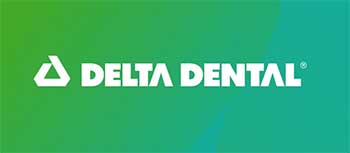When it comes to choosing dental insurance, Aetna and Delta Dental are two of the biggest names out there. But how do their plans, networks, and costs compare? This comprehensive guide examines the key factors you need to know when deciding between Aetna and Delta Dental.
A Brief Comparison Table
| Factor | Aetna | Delta Dental |
| Plan Types | PPO, HMO | PPO, DeltaCare USA (DHMO) |
| Network Size | 400,000+ dentists nationwide | 156,000+ dentists nationwide |
| Covered Services | Preventive, basic, and major services | Preventive, basic, and major services |
| Annual Deductible | $50 – $75 individual, $150 – $225 family | $25 – $100 individual, $75 – $300 family |
| Annual Maximum | $1,000 – $1,500 | $1,000 – $2,000 |
| Waiting Periods | None for large groups, <12 months for small groups | None for large groups, <12 months for small groups |
| Discounts | 15-45% savings on non-covered services | Savings on vision and non-covered dental services |
| Customer Satisfaction | A+ BBB rating, positive reviews | Not BBB accredited, mixed reviews |
Overview Of Aetna Dental Plans
Aetna is one of the largest health insurance providers in the U.S. While best known for medical coverage, they also offer dental insurance plans for individuals, families, and employers. Here are some highlights of Aetna dental plans:

- Plan types – Aetna offers PPO and HMO dental plans. PPOs allow you to visit any dentist while paying less out-of-pocket for in-network providers. HMOs require you to select a primary care dentist who coordinates all care.
- Network size – Aetna has one of the largest dental PPO networks with over 400,000 dentists and specialists nationwide.
- Covered services – Most Aetna plans cover preventive services like cleanings and x-rays at 100%. Basic services like fillings are covered at 80%, while major work like crowns and dentures are covered at 50%.
- Out-of-pocket costs – With PPO plans, you pay deductibles of $50 to $75 for individuals or $150 to $225 for families. Then you pay coinsurance for covered services until reaching the annual maximum, usually $1,000 to $1,500.
- Discounts – Even without dental insurance, Aetna members get access to discounts on services through affordable dental plans. These can save 15% to 45% on dental care.
Overview Of Delta Dental Insurance
Delta Dental is the largest dental insurance provider in the U.S. with networks in all 50 states. Here are some key features of Delta Dental plans:

- Plan types – Delta Dental offers both PPO and HMO dental plans. They also offer hybrid plans like DeltaCare USA, which functions like an HMO but with set copays for services.
- Network size – Delta Dental PPO has over 156,000 dentist locations nationwide. DeltaCare USA has a smaller network but focuses on reducing out-of-pocket costs.
- Covered services – Delta Dental plans cover preventive services like exams and cleanings at 100%. Basic and major services are covered at 80% and 50% respectively after you meet your deductible.
- Out-of-pocket costs – PPO deductibles range from $25 to $100 for individuals or $75 to $300 for families. Maximums go up to $1,500 to $2,000. DeltaCare USA plans have no deductibles but set copays for services.
- Discounts – Delta Dental provides discounts on non-covered services like teeth whitening when visiting network dentists. Their Vision Program also offers savings on eye exams, glasses, and contacts.
Also Read: Choose Between Priority Health And Blue Cross Blue Shield.
Factors To Compare Aetna Vs. Delta Dental
When choosing between Aetna and Delta Dental, here are some key factors to consider:
- Network Size and Dentist Availability
For the most choice and savings, PPO plans with larger networks are preferable. Aetna has a much broader PPO network compared to Delta Dental. But Delta Dental may still have adequate coverage depending on your location. Be sure to check each company’s provider lookup tool to see if your dentist participates before enrolling.
- Plan Types and How They Work
While PPOs from both providers offer the most flexibility, Delta Dental also offers DeltaCare USA plans. These HMO-like plans have set copays for services, which some find easier to understand and budget for. However, they limit you to a smaller dentist network.
- Covered Services and Limitations
The standard services covered don’t vary significantly between Aetna and Delta Dental. But you may find subtle differences in coverage for things like orthodontics, dental implants, or TMJ treatment. Read the fine print to ensure the plan meets your dental needs.
- Costs and Fees
Out-of-pocket costs are fairly comparable between the two companies. Both have deductibles around $50 for PPO plans, and maximums between $1,000 to $1,500. Delta Dental PPOs may be somewhat more affordable for families since their family deductible maximum is $300 Vs. $225 for Aetna.
- Customer Satisfaction and Reviews
Member satisfaction can give insight into how easily you can use your benefits and if claims are paid smoothly. Aetna holds an A+ rating with the BBB while Delta Dental is not BBB accredited. Online reviews indicate Aetna members tend to be happier with customer service while Delta Dental reviews are mixed.
- Discounts and Additional Benefits
Delta Dental offers more ways to save with discounts on vision care and non-covered dental services when using in-network dentists. Aetna’s discounts are more limited but can still reduce costs for uninsured members.
Also Read: Is Amerigroup Better Than Superior Health Plan?
Frequently Asked Questions (FAQ)
There is no one “best” dental insurance overall. But PPO plans typically offer the most extensive coverage since they allow you to use any dentist. For the widest network, Aetna is hard to beat. But Delta Dental also provides strong nationwide coverage through their PPO and Premier networks.
PPO plans are the most popular type of dental insurance. They make up over 80% of all dental plan enrollments. PPOs give you the choice of any dentist while paying less when you stay in-network. The tradeoff is that premiums are generally higher than more restrictive HMO or DHMO plans.
Waiting periods force you to go without coverage for certain services for up to a year after enrolling. To avoid waiting periods, look for employer group dental plans instead of individual plans.
With Aetna and Delta Dental, large group plans often have no waiting periods. Small business plans may still have short 3-6 month waiting periods for major services.
Since root canals are expensive, you want robust coverage. PPO plans with no waiting periods provide the best dental insurance for root canals and other major services.
Aetna and Delta Dental small business PPOs cover root canals at 50% after a 6-12 month waiting period. For immediate coverage, choose a large group PPO plan from either provider.
Also Read: Is Delta Dental Better Than Willamette Dental?
The Bottom Line
When choosing between Aetna Vs. Delta Dental, you can expect comparable coverage, networks, and costs. Dig into the details and consider which provider has the plans, dentist options, and member perks that fit your needs.
Weigh factors like breadth of network, ease of use, out-of-pocket costs, and customer satisfaction as you decide. With either Aetna or Delta Dental, you get the backing of a leading national dental insurance provider.
